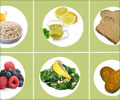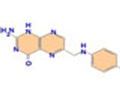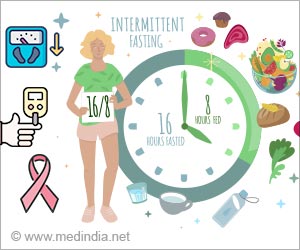Vitamin A deficiency is more prevalent in sub-Saharan Africa. A sweet-potato bread fortified with Vitamin A can help prevent Vitamin A deficiency.

‘The prevalence of Vitamin A deficiency is observed to be higher in sub-Saharan Africa. Sweet potatoes are a major food crop cultivated in Africa and found to be low in beta-carotene. A sweet-potato bread fortified with Vitamin A can help prevent Vitamin A deficiency.’





“Vitamin A deficiency is a huge problem in sub-Saharan Africa,” said Mbogo. UNICEF estimates that 48 percent of children between six and 59 months old in sub-Saharan Africa suffer from vitamin A deficiency, which can lead to preventable childhood blindness and increases the risk of death from common illnesses, such as diarrhea.The four-month collaborative project was made possible by a Borlaug Fellowship through CGIAR, a global agricultural research partnership for a food-secure future. The Borlaug Fellowship Program honors Nobel laureate Norman E. Borlaug, an American agronomist known as the Father of the Green Revolution.
CGIAR science is dedicated to reducing poverty, enhancing food and nutrition security, and improving natural resources and ecosystem services. Its research is carried out by 15 CGIAR centers in close collaboration with hundreds of partners, including national and regional research institutes civil society organizations, academia, development organizations and the private sector.
“Through these collaborative research projects, we seek to empower scientists in developing countries and advance research that will improve agricultural productivity, transfer science and agricultural technologies to strengthen agricultural practices and reduce barriers to technology adoption. Ultimately, the Borlaug program increases food security and supports economic growth,” said Tim Sheehan, who oversees scientific exchange programs for the U.S. Department of Agriculture’s Foreign Agricultural Service.
“USDA did a good job in matching us—it’s a very good synergy,” said Janaswamy. “I am interested in how the starch is being digested and how that might help to address diabetes. Daniel comes at a perfect time because he is developing a product that might have different digestion properties.”
Advertisement
Although sweet potatoes are a major food crop in Africa, the most common varieties have white or yellow flesh and low levels of beta-carotene, according to Mbogo. The International Potato Center developed orange-fleshed sweet potato varieties, which contain high beta-carotene levels and are better suited to African fields and palates.
Advertisement
First, Mbogo incorporates varying levels of sweet potato puree into the bread dough, adjusting the formula while still maintaining the qualities people expect in a loaf of sliced bread. The loaves are processed and baked in a bread machine. Then he evaluates the physical characteristics of the bread—volume, texture and sensory attributes. A panel of taste testers will also give him feedback on the final product.
Determining digestibility, nutrient uptake
Mbogo then evaluates how incorporating sweet potato changes the bread’s digestibility. He uses the Englyst method, an established technique to understand how starch digests in a lab setting without using human subjects.
“We are predicting sweet potato-fortified bread will take a longer time to digest,” Janaswamy said. If so, the product might potentially help diabetics regulate their blood sugar.
The next step is to determine how much beta-carotene the body can absorb. By carrying out simulated digestion in oral, gastric and intestinal phases, they are studying how much of the beta-carotene is released from the bread matrix and is bioavailable for absorption by using human intestinal cells.
By calculating how much beta-carotene the cells absorb, the researchers can determine available vitamin A and, therefore, the nutritional benefits consumers can get from a serving of sweet potato-fortified bread.
Source-Newswise















